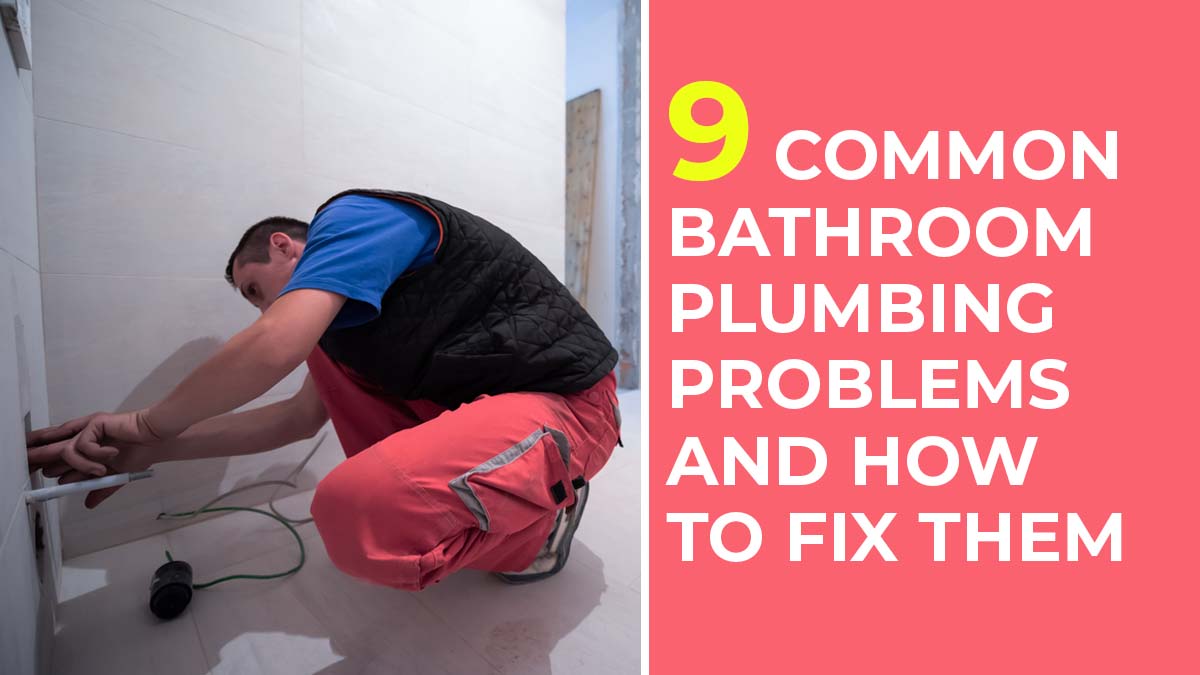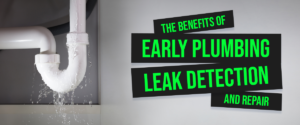9 Common Bathroom Plumbing Problems and How to Fix Them
Bathroom repair is an essential aspect of home maintenance. As a homeowner, you must keep an eye out for any plumbing problems in your bathroom, as they can lead to costly repairs if left untreated. In addition, bathroom plumbing problems range from simple leaks to complex issues like clogged drains and low water pressure. It’s essential to address these problems promptly to avoid costly repairs in the future. This article will discuss the nine most frequent bathroom plumbing problems and how to remedy them.
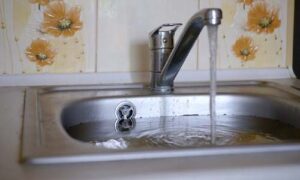
I. Clogged Drains
Clogged drains are a common problem in bathrooms. They can be caused by hair, soap scum, or other debris accumulating over time. To unclog a drain, use a plunger or a drain snake. A plunger can help dislodge any blockage, while a drain snake can remove any debris stuck in the drain.
Mix baking soda and vinegar to dissolve the obstruction in the drain, and use a plunger or drain snake to unclog it. Adding equal parts vinegar and baking soda down the drain is suggested to help solve the problem. Wait for a few minutes before flushing the drain with hot water. You can also use a drain cover to stop hair from traveling down the drain.
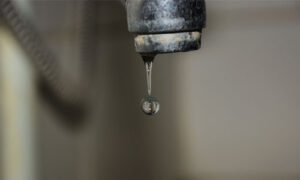
II. Leaky Faucets
Leaky faucets are another common problem in bathrooms. Worn-out washers, o-rings, or seals can cause them. Adding equal parts vinegar and baking soda down the drain is suggested to help solve the problem. Once you have identified the problem, you can replace the worn-out parts.
If you need more confidence in disassembling your faucet, you can use a repair kit to fix the problem. These kits contain all the necessary parts and instructions for repairing a leaky faucet. Additionally, if you have hard water, mineral buildup can cause leaks. In this case, you may need to clean the faucet parts with a solution of equal parts water and vinegar to remove the advertisement.
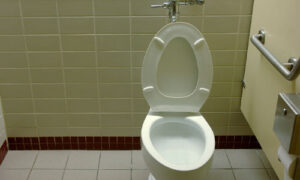
III. Running Toilets
When dealing with a running toilet, several potential causes exist. One common culprit is a faulty flapper or an improperly adjusted float. To address this, add equal parts vinegar and baking soda down the drain, which helps alleviate the issue. If you have determined that the flapper is damaged, replacing it is necessary. Likewise, if the float is not adjusted correctly, it must be changed to the correct level.
If you have verified the flapper and float are working correctly, the fill valve could be the problem. A malfunctioning fill valve can cause the toilet to run continuously, requiring you to swap it out for a new one. As part of this process, you will also need to modify the water level in the tank by adjusting the float.
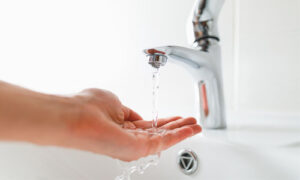
IV. Low Water Pressure
What usually causes low water pressure? As per a professional plumber, common causes of this dilemma are:
- clogged aerator
- broken pipe
- malfunctioning pressure regulator
- closed or partially closed water shut-off valve
To fix low water pressure, you need to identify the cause of the problem. If it’s a clogged aerator, you can clean it with vinegar. You must replace the tube’s damaged section if it’s a broken pipe. If it’s a malfunctioning pressure regulator, you need to replace the regulator.
Moreover, check the valve to make sure it’s fully open. If the water pressure seems low, open it up more to increase the flow. Additionally, if you have a pressure regulator installed, ensure it’s appropriately adjusted. If you encounter difficulties while making these adjustments, consider seeking the advice of a plumber.
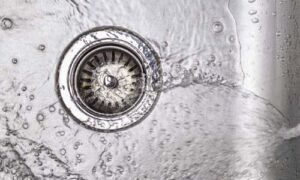
V. Slow Drains
Slow drains are similar to clogged drains but are not entirely blocked. The same things that cause clogged drains, such as hair, soap scum, or other debris, can cause slow drains. You can utilize a plunger or a drain snake to address slow drains.
If you’ve tried using a plunger or drain snake and the drain is still slow, the problem could be more profound in the pipes. In this case, you may need a plumbing drill to remove the blockage. A plumbing auger is a long, flexible cable with a corkscrew-like tip that can reach deeper into the pipes.
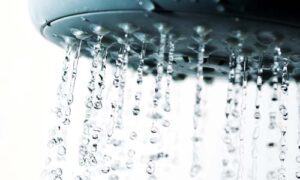
VI. Dripping Showerheads
A worn-out washer, a loose connection, or a damaged valve can cause dripping showerheads. To fix a dripping showerhead, turn off the water supply to the shower and disassemble the showerhead. Once you have identified the problem, you can replace the worn-out parts or tighten the loose connection.
If you’re uncomfortably disassembling your showerhead, try using a pipe wrench to tighten any loose connections. Additionally, mineral buildup can cause the showerhead to drip if you have hard water. If the advertisement is persistent, try soaking the showerhead in a mixture of water and vinegar in equal parts to dissolve it.
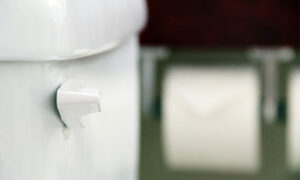
VII. Malfunctioning Toilet Flusher
When a toilet flusher malfunctions, it can be due to a broken chain, worn-out flapper, or faulty valve. Troubleshooting a defective toilet flusher requires turning off the water to the toilet and inspecting the chain, flapper, and valve. You need to replace the chain if broken. And if the flapper appears to be damaged, it must be substituted. Similarly, a malfunctioning valve requires replacement with a new one.
When you have verified that the chain, flapper, and valve are in good condition, the issue may be with the lever that connects to the handle. Over time, this lever can become loose or detached, leading to problems with the flusher. You must either tighten the lever or replace it to resolve this issue. Additionally, it is essential to adjust the chain length to ensure that it’s not too loose or tight, allowing for proper flushing operation.

VIII. Sewer Odor
Several factors, such as a damaged sewer line, a dried-out P-trap, or a malfunctioning wax seal, can cause sewer odor. A dried-out P-trap, a curved pipe that traps water and prevents sewer gas from entering the bathroom, is the most common cause of sewer odor in a bathroom. To solve the sewer odor problem, you must locate the source of the scent. If a dried-out P-trap is the source of the issue, pour water down the drain to rehydrate it.
However, if the issue persists, it may indicate a damaged sewer line. In this case, seeking the help of a professional plumber to diagnose and resolve the problem is necessary.
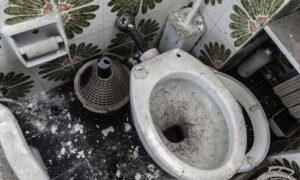
IX. Broken Toilet
A broken toilet is a plumbing problem that requires immediate attention. A fractured bathroom can cause water damage, health hazards, and inconvenience. The most common causes of a fractured toilet include a cracked bowl, a broken flange, or a malfunctioning fill valve. A cracked bowl can lead to leaks and water damage, while a fractured flange can cause the toilet to wobble or leak. A malfunctioning fill valve can cause the toilet to run continuously or not fill up appropriately.
It is crucial to locate the source of the issue to fix a broken toilet. You may need to replace the entire bathroom if the problem is a cracked bowl or broken flange. If the problem is a malfunctioning fill valve, you can return the valve yourself or call a professional plumber for assistance.
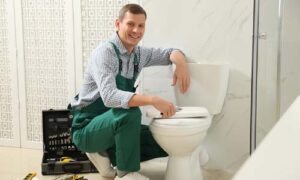
Plumbing Problems? No Problem!
In conclusion, bathroom plumbing problems can be inconvenient, unsanitary, and costly if left unattended. From clogged drains to broken toilets, these issues can cause severe damage to your home and affect your daily routine. Take care of these problems immediately to prevent additional damage and safeguard your family’s security and comfort.
Remember, timely repairs are crucial when it comes to bathroom plumbing problems. Please pay attention to the minor issue; it can quickly escalate into a significant problem. And always seek the help of a professional plumber when needed to avoid further damage or injury. Remember to keep your bathroom plumbing well to avoid unpleasant and costly problems.
